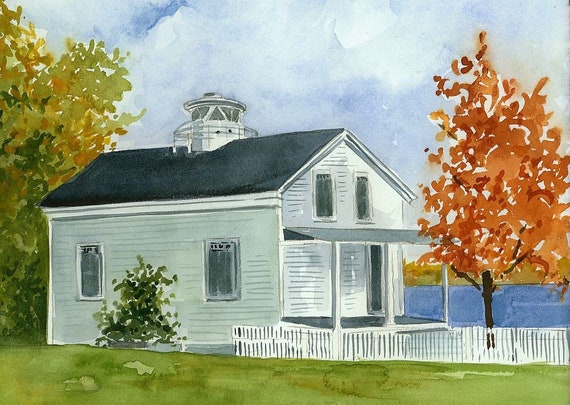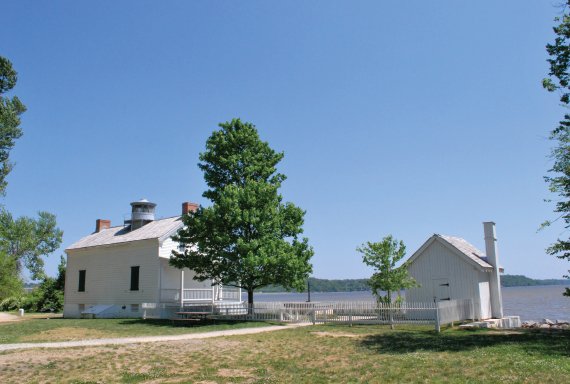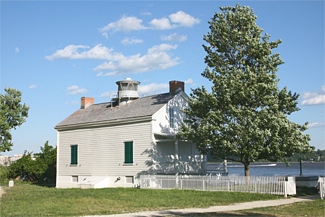Stress-Free: Tips for Jones Point Lighthouse Parking
Stress-Free: Tips for Jones Point Lighthouse Parking
Blog Article
Untangle the Stories Behind Jones Factor Lighthouse: A Famous Heritage Website
Snuggled along the Potomac River, the Jones Factor Lighthouse stands as a silent sentinel to centuries of maritime background and intrigue. Its weather-beaten wall surfaces murmur stories of caretakers that tended its sign via tornado and sparkle, and reports of spooky sightings that have actually shrouded the framework in enigma. Beyond the facade of red brick and iron, exists a labyrinth of tales waiting to be discovered - stories that chronicle the evolution of maritime navigation, the strength of its keepers, and the continuous initiatives to protect this renowned heritage website for generations to find.
Historic History of Jones Point Lighthouse
Situated on the banks of the Potomac River, the historic history of Jones Point Lighthouse traces back to the early 19th century when it was initial appointed to lead maritime web traffic in the region. Developed in 1856, the lighthouse offered as a critical navigational help for ships going into the busy port of Alexandria, Virginia - Jones Point Lighthouse parking. Its tactical location at Jones Point was selected to help vessels in securely navigating the treacherous waters of the Potomac River, especially throughout inclement weather condition or low visibility conditions

Building And Construction and Architectural Functions
The building and construction of the Jones Factor Lighthouse showcased careful interest to detail and cutting-edge architectural features that exemplified the design improvements of the mid-19th century. Developed in 1855, the lighthouse stands as a beacon of marine history, constructed with a conelike red brick tower climbing 39 feet over ground level. The architectural design, credited to the gifted engineer William F. Raynolds, bundled components such as a light space with a Fresnel lens that gave off a powerful light noticeable from miles away, helping ships navigating the Potomac River.
The framework's walls taper towards the top, a timeless style function in lighthouses to lower wind resistance. The Jones Point Lighthouse's building and construction materials were very carefully sourced, incorporating performance with looks, ensuring resilience in rough weather condition problems.

Significance in Maritime Navigating
Navigating the waters of the Potomac River was substantially boosted by the critical positioning and powerful illumination of the Jones Point Lighthouse. Acting as a beacon of security and assistance, this iconic lighthouse played a vital role in maritime navigation, especially throughout times of adverse weather problems and reduced exposure. Mariners depended on the distinctive light pattern produced by the lighthouse to recognize their area, avoid hazardous areas, and safely browse the river's networks. The Jones Point Lighthouse not just helped ships going into and exiting the Potomac River however also promoted the movement of vessels transferring items and guests along the river.
Moreover, the lighthouse's existence marked a significant factor of reference for seafarers, providing them with a dependable site amidst the vast stretch of the river. Its distinct architectural attributes and famous location made it a crucial aid to navigating, guiding many vessels through the difficult waters of the Potomac. The Jones Factor Lighthouse stands as a testament to the value of maritime framework in promoting safe and efficient navigating along important water courses.

Tales of Keepers and Hauntings
With a history steeped in maritime navigating, the Jones Point Lighthouse also holds stories of keepers and hauntings that have actually captivated lots of over the years. Their stories of strength and dedication contribute to the lighthouse's abundant heritage.
In addition to the keepers' tales, Jones Point Lighthouse is also rumored to be haunted. Whether truth or mythology, the tales of keepers and hauntings at Jones Point Lighthouse continue to captivate visitors and researchers alike.
Repair Initiatives and Future Conservation
In the middle of the historic relevance of Jones Factor Lighthouse, recurring reconstruction initiatives and future conservation campaigns stand as essential ventures to secure this maritime site for generations to find. The lighthouse, with its rich maritime heritage and cultural value, requires continual maintenance and reconstruction to guarantee its long life and importance in the contemporary age. Currently, restoration initiatives are concentrated on fixing the lighthouse structure, preserving its initial style, and preserving historical accuracy.
The restoration procedure involves knowledgeable craftsmen and conservation professionals working carefully to revitalize the lighthouse while sticking to strict preservation standards. By using traditional structure methods and authentic products, the aim is to keep the lighthouse's genuine appeal and historic integrity. Furthermore, my latest blog post future conservation efforts consist of implementing lasting techniques to reduce ecological impact and guarantee the lighthouse's strength against natural environments.
Through these repair initiatives and forward-looking preservation approaches, Jones Point Lighthouse is poised to stand as a beacon of naval background and a symbol of cultural heritage for many years ahead. (Jones Point Lighthouse VA)
Final Thought
To conclude, Jones Factor Lighthouse stands as a testimony to the abundant maritime history of the region. Its building and architectural functions show the relevance of secure navigating along the Potomac River. The stories of keepers and alleged hauntings contribute to its mystique and cultural significance. Efforts to restore and protect this famous heritage site make sure that future generations can value its historical value and importance in maritime navigation.
Please visit one of our local supporters - Estrella Esthètique Sugaring
Report this page